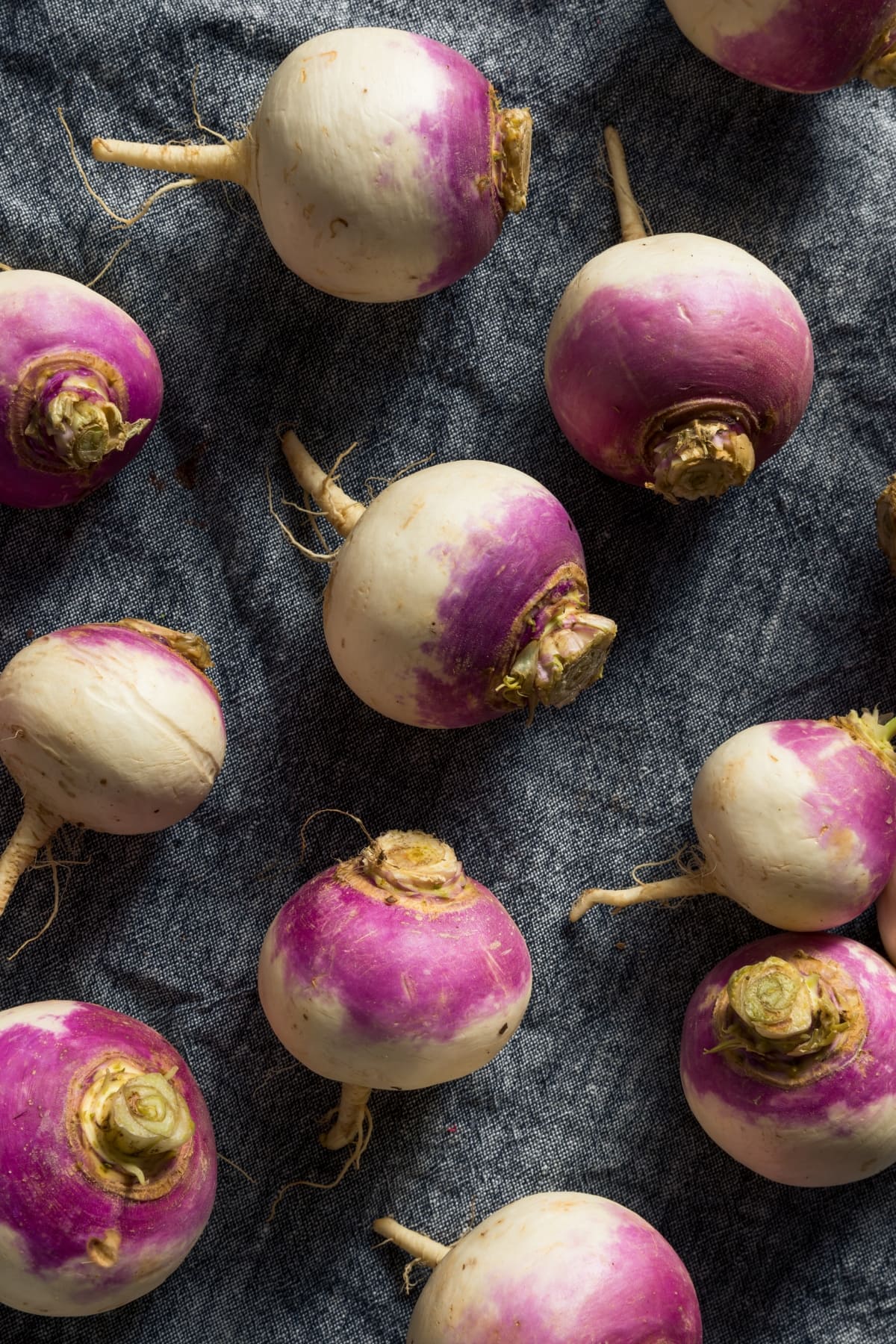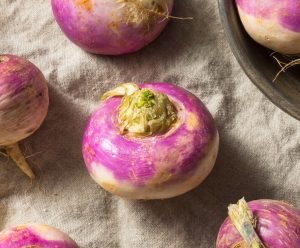The difference between turnips vs. radishes comes down to five main differences.
While both are root vegetables with big leafy stems, they differ in appearance, shelf life, taste, culinary uses, and where they grow.

While they share some similarities, you’ll be surprised by how many things set them apart.
So, if you want to become a pro in distinguishing a turnip vs. a radish, let’s get straight to it!
Turnip vs. Radish (What’s the Difference?)
Appearance
Turnips and radishes vary notably in appearance.
Turnips are typically larger. They boast round or oval shapes and various colors, including white, purple, and yellow.
Radishes, on the other hand, are smaller. Similar to turnips, they also vary in shape, ranging from round to elongated.
They’re known for their vibrant red, pink, white, or black skin.
Taste
In terms of taste, turnips offer a mildly sweet and earthy flavor.
Some say it’s like a blend of cabbage and potato.
Radishes are known for their crisp texture and peppery, slightly spicy taste.
The spiciness can range from mild to intense, depending on the variety.
Growth
Turnips are root vegetables and thrive in cooler climates. They’re often cultivated for their underground, edible bulb.
Radishes also grow as root vegetables, but they tend to mature faster than turnips.
This quick growth makes radishes a popular choice for home gardeners seeking a relatively speedy harvest.
Shelf Life
Turnips typically have a longer shelf life compared to radishes.
When properly stored in a cool, dark place, turnips can stay fresh for up to 2-3 weeks. In the freezer, they last anywhere between 8-10 months.
Radishes, due to their higher water content, are more perishable.
It’s best to enjoy them within a week of harvesting and keep them in a cool, dark place. They’ll last up to 6 months if you want to freeze them.
Culinary Uses
Both turnips and radishes are used in various culinary creations.
Turnips are often added to stews, soups, and roasted dishes. Radishes, with their crispness and zesty flavor, are frequently enjoyed raw.
You can use them in salads or lightly season them for healthy, crunchy snacks.
I also like to pickle my radishes to give them a nice, tangy twist.

What Are Turnips?
Turnips are root vegetables belonging to the Brassicaceae family.
This vegetable family includes other staples like cabbage, broccoli, and mustard.
They’re round or oval and come in many colors. Their skin is often thin and can be either smooth or slightly textured. The flesh of turnips is firm and crisp when raw. It becomes tender and sweeter when cooked.
Turnips can be roasted, boiled, mashed, steamed, or even eaten raw.
In addition to their culinary uses, they offer nutritional benefits. They’re a good source of vitamins and minerals, including vitamin C, potassium, and fiber.
Turnip greens, the leafy tops of the plant, are also edible and are rich in nutrients.

What Are Radishes?
Radishes also belong to the famous Brassicaceae family of vegetables.
They come in various shapes and sizes, from round to elongated. Their skin can be red, pink, white, black, or multi-colored.
The flesh of a radish is usually white, crisp, and slightly watery.
It has a unique peppery taste that ranges. They can be mild or spicy.
Radishes are often planted as a cool-season crop, and they’re super easy to cultivate.
They’re low in calories and are a good source of vitamins.

Can You Substitute Radishes for Turnips and Vice Versa?
Substituting radishes for turnips is feasible in cooking. I’ve done it many times!
But it’s essential to know the distinct qualities of each and how they might affect your dish.
Radishes possess a noticeably peppery and slightly spicy flavor. It can be more intense than the milder taste of turnips.
If you substitute radishes for turnips, just adjust the quantity to achieve a balanced flavor.
Additionally, radishes have a crisp and crunchy texture, which adds a refreshing element.
However, keep in mind that radishes tend to lose some of their peppery flavor when cooked. This might impact the overall flavor of the dish.
If you’re substituting turnips for radishes, there are also differences.
Turnips offer a milder and sweeter flavor compared to radishes.
This can work particularly well if you want to reduce the spiciness in a radish-based recipe.










